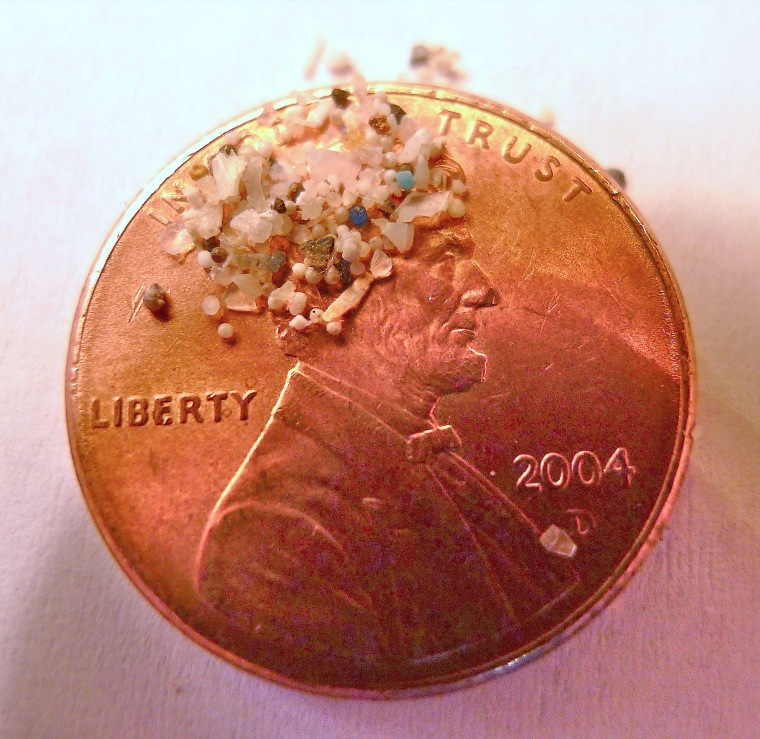Could your face wash end up in your sushi? Is your whiter-than-white smile damaging the Great Lakes?
The answer to those seemingly bizarre questions is “yes."
A number of personal care products, such as shower gel, face cream and toothpaste, contain tiny plastic particles known as “microbeads.”
The tiny synthetic spheres offer attractive abrasive qualities that enable “age-defying” facial scrubs, polished teeth or pretty nails. But when they are flushed down the drain, they pass straight through water treatment systems and into waterways, where they create environmental damage -- or are gobbled up by fish who mistake them for food.

Beauty products aren’t the only source of microbeads, which the National Oceanic and Atmospheric Administration defines as any particle 5 millimeters or smaller. They also are created as larger plastic items, such as bottles or containers that found their way into the environment, break down.
But eliminating the use of the particles from such products removes one source of the problem, according to NOAA.
“When microbeads enter the marine environment or Great Lakes, they are considered a form of “microplastic” marine debris,” it said in a recent blog post. “Plastics never really go away when they’re in rivers, oceans, or lakes. Instead, they can last decades.”
Awareness of the problem is increasing, with legislation banning the use of microbeads in personal care products being passed or proposed in Europe, Canada and at least 18 U.S. states. Michigan this week became the latest state to consider such a ban.
Video: Rare Giant Devil Rays Filmed Off the Coast of Croatia
"Plastics have come to play a crucial role in modern life, but the environmental impacts of the way we use them cannot be ignored," says Achim Steiner, under-secretary-general of the United Nations Environment Program, citing a study that estimates plastic waste causes $13 billion a year in environmental damage. "Scientists have recently found tiny pieces of plastic trapped in sea ice. These contaminated particles eventually become a source of chemicals in our food. The key course of action is to prevent plastic debris from entering the environment in the first place."
The personal care industry is searching for solutions. L’Oréal, Unilever, Colgate-Palmolive, Procter & Gamble, Johnson & Johnson, and Crest have eliminated or have promised to get rid of microbeads in their products. But some companies and concerns have pushed back on proposed legislation, arguing that anti-microbead laws would “stifle innovation.”
Many smaller natural or organic personal care companies use alternatives to microbeads.
Ocean Plastic Could Be Found in 99 Percent of Seabirds by 2050
“There are already so many naturally great ways to exfoliate -- we use elements like sea salt or lava for our soaks and scrubs,” said Stephanie Lawrence, co-founder of Mer-Sea & Co., a home fragrance and body care company.
Polly Fox, European brand manager for Siam Botanicals, which specializes in plant-based beauty products, said there also are health concerns about microbeads.
“Do the chemicals on these plastic beads get absorbed into the bloodstream and tissue of the animals that eat them? And does this have implications for seafood-eating humans?” she said. “Scientists are investigating, but we don’t yet have the answers. If you feel strongly about this issue, stop using your marine-life-polluting products – and don’t forget to let the manufacturer know that you’ve done so. There are lots of natural, biodegradable alternatives out there, such as jojoba wax beads.”
To find out if your favorite product contains plastic microbeads, you can download the Beat the Microbead app and scan the barcode.
